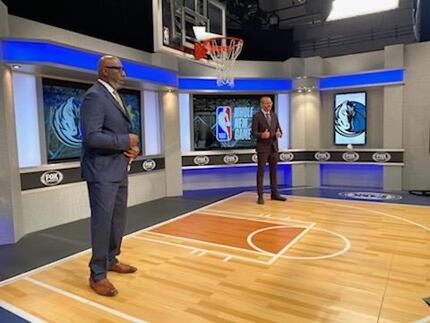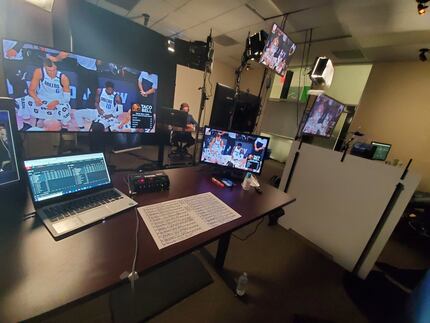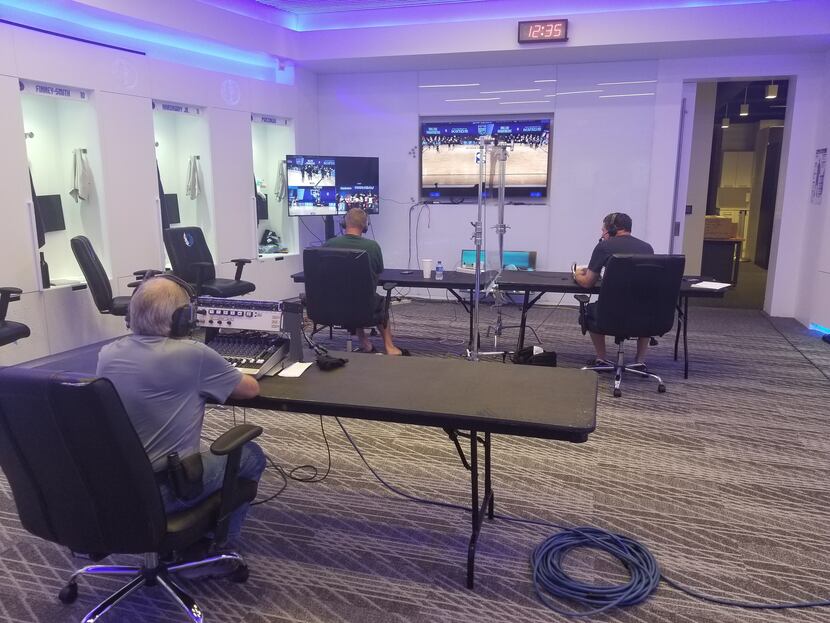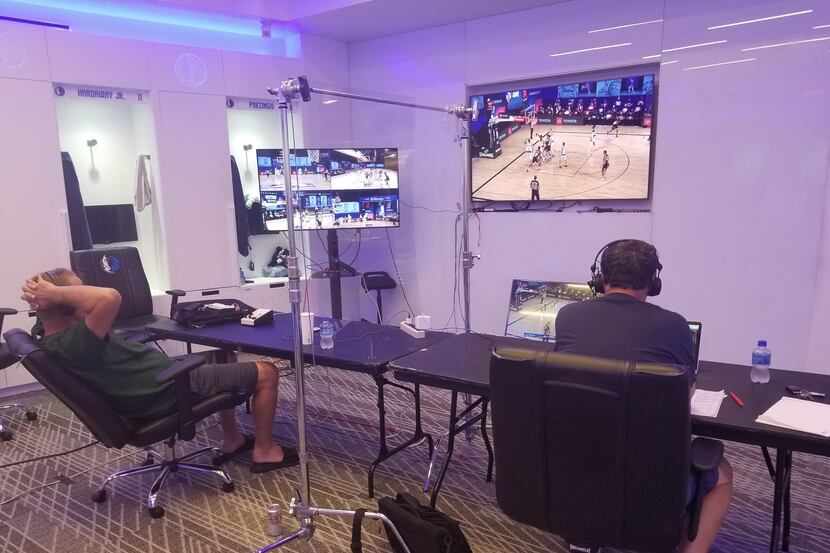When Maxi Kleber hit a 3-pointer late in the Mavericks’ opening game in the NBA bubble last Friday, Chuck Cooperstein put the same emotion into the call that he has for big moments since becoming the team’s play-by-play broadcaster more than a decade ago.
Except on this call, and in the Mavericks’ two games since, Cooperstein’s reaction didn’t come amid a euphoric American Airlines Center crowd. Or among quiet, dejected fans as the Mavericks blew their lead and lost to the Rockets in overtime in that opener.
Cooperstein was in the Mavericks’ locker room in the American Airlines Center, where ESPN 103.3 will broadcast games for the remainder of the season.

As the Mavericks’ first three games since the NBA’s coronavirus suspension have proved frustrating and thrilling, the station’s distanced setup hasn’t been unique. All local outlets, including Fox Sports Southwest’s TV broadcast from Las Colinas, have been done remotely.
But the logistics for delivering commentary and insight during the Mavericks’ first run to the playoffs since 2016 have, like so many other aspects of life during the pandemic, been unprecedented.
“I make the call as I would always make the call,” Cooperstein said, “and then there’s just the little ambient sound that’s coming in from the arena. It’s obviously not the same, and it’s very strange that way. It really is.”
ESPN 103.3 has a creative setup: Cooperstein and analyst Brad Davis each work on separate long tables facing an 80-inch TV screen on the wall, which shows pregame opponent film when the Mavericks inhabit the space.
The two watch the main TV broadcast on the big screen and have a few other views available on a separate monitor. Plexiglas separates Cooperstein and Davis’ tables. Broadcast engineer Bill Guyger, who sits in line with Cooperstein and Davis during traditional calls in Section 209, now sits at a table behind them.
FSSW has utilized a similar structure.

Play-by-play commentator Mark Followill and analysts Derek Harper and Jeff “Skin” Wade work in a triangle in their studio. All are distanced, but they installed Plexiglas between Followill and Harper because “in loud broadcast mode, I would probably say 6 feet is not a safe distance when you’re concerned about respiratory droplets,” Followill said.
The three have multiple screens with different camera angles and one with a video of the others, so they can make eye contact.
Neither outlet has any employees in the NBA’s Disney World bubble.
Instead, FSSW relies on a “world feed” from the NBA — the stream available to all outlets showing each game — and can make a few requests for shot specifics during regional-only broadcasts.
ESPN 103.3 also relies on a feed from the NBA, with courtside microphones providing, for example, the squeaks from players’ shoes.
“Technically, everything’s gone pretty flawlessly,” Guyger said.
But broadcasters have dealt with some quirks.
When an official called Luka Doncic for an offensive foul in the second quarter Tuesday against the Kings, the TV camera angle in the moment didn’t extend to show the referee. Cooperstein would have had a full view in-person, but he had to wait a few seconds to correctly address the call.
Followill is familiar with remote broadcasting from his work with FC Dallas, international soccer and the Olympics, but he’s also faced reactive situations this week.

Because Mavericks-Rockets last Friday was broadcast nationally, ESPN, which has employees in the bubble, got preference for camera angles. While FSSW planned to address the Mavericks’ decision to replace their names with a social justice message on their jerseys, the network didn’t control timing.
That meant Followill quickly pivoted to comment on the Mavericks’ promotion of “Equality” when the camera zoomed on to Kristaps Porzingis’ jersey in the first half.
“We would’ve of course preferred to do it in our way and [in] the timing we chose,” Followill said. “But we still got to tell a very, very important story.”
Not all aspects have been piecemeal.
FSSW has worked with the Mavericks’ social media team for graphics and behind-the-scenes video, and Tim Hardaway Jr. has filmed a video diary series to air during broadcasts.
During traditional broadcasts, Cooperstein can hear decisions at the scorer’s table through an earpiece feed from the NBA’s national office, helping him understand the situation and timing, but he can’t broadcast it directly to listeners.
During the restart, officials’ decisions come directly through the radio.
That’s allowed Mavericks fans a chance to hear in-moment reactions, even though they can’t join Cooperstein at the American Airlines Center.

Read more
Find more Mavericks stories from The Dallas Morning News here.

